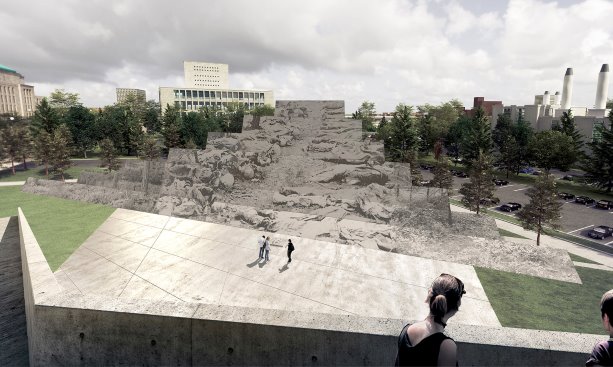OTTAWA—The federal Liberal government has abandoned a controversial Harper-era initiative, the National Monument to the Victims of Communism, proposed for a prominent site near the Supreme Court of Canada in Ottawa, in favour of a new plan.
Heritage Minister Melanie Joly announced on Dec. 17 that the Government of Canada will seek National Capital Commission (NCC) board approval for the Garden of the Provinces and Territories site over half a kilometre away from the Supreme Court property as the location for a new memorial. She said the government intends to launch a consultation process early in 2016 for a review of design considerations.
"The process was too divisive, too political and didn’t generate the right consensus that ought to be generated when it comes to a monument," Joly said at a media conference. "It’s an important monument and ought to be celebrated. It ought to be commemorated. But at the same time, the process has to be an open, transparent and inclusive one, and that’s exactly why we’re doing this right now."
Within hours, the Royal Architectural Institute of Canada (RAIC), a vocal opponent of the original location, issued a media statement saying it is relieved at the news and urging a redesign of the memorial to better suit the new location.
"It is good news that the Government of Canada has chosen to respect the Long Term Vision and Plan (LTVP) for the Parliamentary and Judicial Precincts," said RAIC president-elect Allan Teramura.
He noted that the plan had been developed over the past 100 years by some of Canada’s finest architects, urban designers and landscape architects.
In the LTVP, the original site is intended for a new building for the federal court, the RAIC explains in its statement. This building would complete a "Judicial Triad," consisting of the Supreme Court of Canada to the north, flanked by the Justice Building to the east, and a federal court on the parcel to the west.
It is meant to complement the "Parliamentary Triad" of the Centre, East, and West Blocks; together they create a cultural landscape that represents Canada’s core democratic institutions.
"The RAIC respectfully suggests that the NCC and the Canadian Heritage department work together to arrive at a better solution," says Teramura. "Moving the current design to the Garden of the Provinces would not be appropriate. If the memorial is placed on that important site, it needs to be compatible in scale and character. When the NCC offered that site, they likely expected a commemoration of a much more modest scale."
The RAIC was a member of a coalition of organizations and individuals that campaigned for almost a year to persuade the former Conservative government to relocate the memorial. Several prominent Liberals had opposed the original location while in opposition.
"We remain very concerned that an executive order was able to override the LTVP," says Teramura. The RAIC statement argues that the LTVP was approved by all stakeholders and political parties after extensive consultation. Despite this approval, the former government attempted to alter the Judicial Precinct in an "intrusive and destructive way, without reference to the LTVP and due process," says the RAIC.
The Royal Architectural Institute of Canada represents about 5,000 member architects.



Recent Comments
comments for this post are closed